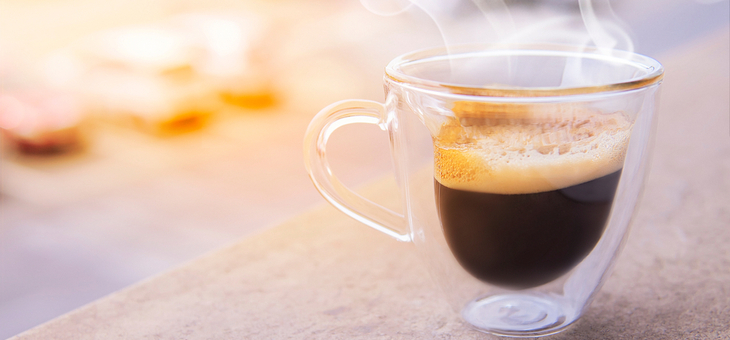We all know that the flat white is one of our great Australian innovations, right up there with lamingtons and Tim Tams. But, believe it or not, there are other great coffees out there to try.
Since we can’t get the original experience right now, here’s how to recreate eight global coffees at home.
Italy: ristretto
To drink coffee like a true Italian, you’re going to need enough espresso to see you through from morning to night.
A ristretto is a short espresso with less water but equal potency. When making it at home, it’s best to use Arabica or Robusta coffee blends to capture the Italian essence. And you’ll want to keep things simple when it comes to add-ons.
The few accepted ristretto variations are to add a drop of liquor (usually anise or grappa), incorporate milk foam, or serve it in a cup with hazelnut cream.
Have your first ristretto early paired with a biscotti or croissant and jam.
Miami: Cuban espresso
This type of espresso is traditionally sweetened with natural brown sugar that is whipped into the first and strongest drops of espresso.
Drinking café Cubano remains a prominent social and cultural activity in Cuba and in Cuban American communities, particularly in Miami, Tampa and the Florida Keys.
Miami’s official coffee break time is 3:05pm, in honour of the 305 area code. Go the extra mile by enjoying your coffee at this time with guava, cheese or meat pastelitos (a traditional Cuban pastry) on the side.
Read more: When is the best time to drink coffee and how much?
Vietnam: cà phê sữa đá
On warmer days you may want to reach for an iced coffee.
Vietnam’s most popular coffee drink: cà phê sữa đá, is iced coffee sweetened with condensed milk and is a great option.
This coffee is made using medium to coarse ground dark roast Vietnamese-grown coffee with a small Vietnamese drip filter (phin cà phê).
Add two to three tablespoons of sweetened condensed milk to a glass and allow the coffee to be filtered on top. The whole thing is then quickly poured into a glass full of ice.
Cà phê sữa đá was created due to the limitations on the availability of fresh milk when the dairy farming industry was still in its infancy.
Korea: dalgona coffee
Korea has given the world K-Pop and K-Beauty, and now, dalgona coffee. It exploded in popularity in 2020 and is basically an upside-down cappuccino.
If you’ve got instant coffee, sugar, and water on hand, you can make this. It’ll go by faster if you have a hand mixer, but a humble regular whisk, one powerful arm, and a good dose of patience and endurance will get you there too.
In a medium bowl, combine two tablespoons of sugar, two tablespoons of instant coffee, and two tablespoons of cold water. Vigorously whisk until the mixture turns silky smooth and shiny, then continue whisking until it thickens and holds its lofty, foamy shape.
Fill a glass with ice and milk then dollop the coffee mixture on top. Mix before drinking.
Singapore: kopi
You can try kopi at home if you have some butter and a little time.
Robusta beans are first roasted in a wok with butter or lard and sugar until they turn deep brown. This caramelizes the beans and gives them a unique aroma.
Read more: What is bulletproof coffee and is it good for you?
The beans are then ground and put through a filter, the coffee is mixed with sweetened condensed milk, evaporated milk, or served straight.
For a truly Singaporean experience, you’ll need the right snack.
Many Singaporeans enjoy sipping their kopi while snacking on some kaya toast – a local breakfast staple of charcoal-grilled or toasted bread with a slice of butter and a traditional jam made from coconut and eggs.
France: French press
Perhaps one of the easiest to recreate at home. The French press is a full immersion brewing method with a long steeping time and produces a thick and full-bodied cup which many people drink with milk added.
Start with coarse-ground beans to get the best flavour and enjoy alongside a small dessert.
Guatemala: Guatemalan coffee
If you take a look at where your regular coffee is sourced, you may find you are already drinking Guatemalan coffee. But do you drink it like a Guatemalan?
In Guatemala, coffee is traditionally taken black with a splash of milk and some sugar. The key to getting the best flavour is to make sure your beans are fresh and that you grind them yourself.
Source some champurradas to have with your coffee for an authentic experience. They are almost a cross between biscotti and a sugar cookie. They’re crunchy and flat – making them the perfect thing to dunk into a cup of coffee.
Read more: Interesting biscuits to try from around the world
Bali: kopi
The secret to great Balinese coffee comes during the roasting process. Everyone has different recipes, but the standard is one kilo of coffee plus half a kilo of rice added together, then roasted. Once the roasting is complete, the mixture is ground into a powder.
Add one tablespoon of the coffee mixture and one tablespoon of sugar into a glass of hot water and stir.
The intensity can be altered by varying the amount of rice or experimenting with the roasting time.
What’s your go-to coffee style? Have you tried any of these coffees in their home country?
If you enjoy our content, don’t keep it to yourself. Share our free eNews with your friends and encourage them to sign up.

